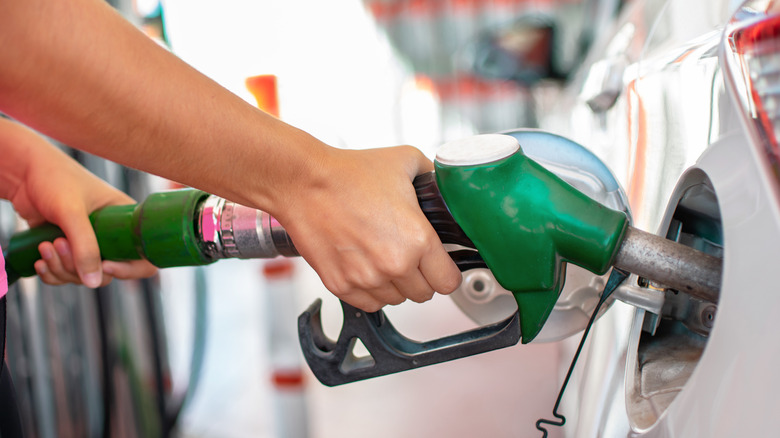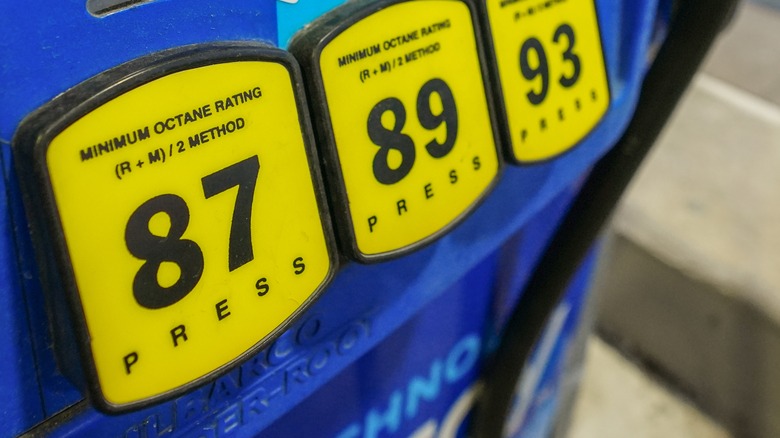The Big Myth About Gasoline You Need To Stop Believing
With gas prices approaching record highs, motorists may be tempted to save a few dollars by using a lower grade fuel in their vehicles. AAA reports that premium gasoline can cost over $0.60 per gallon more than regular gas on average. On the flip side, many motorists still use premium gasoline despite the higher cost, doing so under the belief that higher octane fuel is better for their vehicles. Is that really the case, or is it a waste of money?
The main difference between premium and regular gas is the octane rating. Premium gasoline has a higher octane rating than either standard or mid-grade fuels. All grades of fuel contain the same amount of energy — octane rating relates to how easy a fuel is to ignite, with higher octane fuels burning more evenly under higher temperatures and higher pressures. A higher octane fuel will, in some cases, provide a performance boost under hard acceleration and conditions requiring high-end performance, according to MIT — but is it needed for regular road use?
Premium gas may not provide much benefit
Just because something is expensive doesn't mean it's the best option. When choosing a fuel, it's important to consider which octane rating is best for your engine, not which costs the most. Your car's manufacturer will have specified an octane rating, and this information is usually noted in the car's manual.
The U.S. Department of Energy says "regular" gasoline is typically rated at 87 octane, mid-grade is 88-90, and premium is 91-94. The octane rating of each fuel is also displayed on the pumps in large black numbers. You should not use fuel with a lower octane rating than your vehicle's manufacturer recommends, as this could cause engine knocking, loss of power, and poor fuel economy. However, the benefit of using a higher octane fuel than your manufacturer recommends is negligible and may not be worth the increased costs. Using a higher octane fuel is slightly better for the environment and provides a small mileage boost per gallon, but you'll probably go further on cheaper fuel.
Another concern is the amount of ethanol in some higher octane fuels. Ethanol can be used to increase a fuel's octane rating, as it has a higher octane rating than pure gasoline. Most fuel available in the U.S. contains up to 10% ethanol, but some manufacturers are now including up to 15% — something AAA has spoken out against, according to USA Today. The breakdown service says 15% ethanol fuels could damage fuel systems and void warranties, while the EPA says it is safe in vehicles manufactured after 2001. The bottom line is that if your car is specifically designed to take premium gasoline, then stick with premium. If you're driving a vehicle that is happy running on regular gasoline, you're probably better off saving the extra $0.60 per gallon and sticking to regular.

